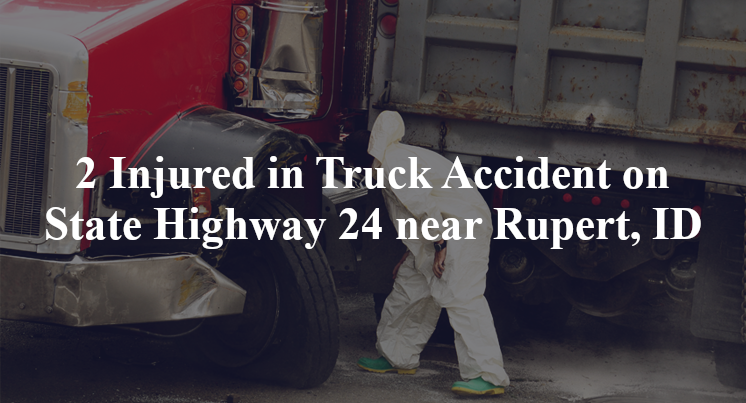2 Injured in Truck Accident on State Highway 24 near Rupert, ID
Minidoka County, ID — September 23, 2025, two people were injured in a truck accident at about 5 p.m. on State Highway 24 north of Rupert.
Authorities said a 1983 International semi-truck was headed north when it crashed into the back of a 2010 Kenworth that had stopped to make a left turn near mile marker 23. Both trucks were hauling potatoes.

The International driver, a 43-year-old man from Albuquerque, NM, was flown to a local hospital with unspecified injuries after the crash, according to authorities.
The Kenworth driver, a 38-year-old Rupert man, was hospitalized as well, authorities said.
Authorities have not released any additional information about the Minidoka County crash at this time.
Commentary by Attorney Michael Grossman
When two potato-hauling semi-trucks collide on a rural highway, most people will understandably wonder: How does that even happen? According to reports, one truck had stopped to make a left turn and the other plowed into the back of it. That’s the kind of crash that raises basic but serious questions, ones that only a proper investigation can answer.
To start, we don’t yet know whether the following truck was speeding, distracted or experiencing a mechanical failure. Nor do we know how long the lead truck had been stopped or whether its brake lights were working. All of those are key facts that could shift responsibility in different directions. Without them, it’s impossible to say what really caused the crash.
That’s where black box data becomes critical. Today’s commercial trucks are equipped with engine control modules (ECMs) that record things like speed, braking, throttle position and sudden deceleration. If the rear truck was traveling too fast or didn’t brake until the last second, the ECM will show it. Likewise, dash cam footage, if either truck had it, could clarify how visible the lead truck was and how much time the driver had to react.
Another possibility is distraction. Was the driver on the phone? Looking at paperwork? Only a subpoena of cell phone records will answer that. I’ve worked cases where everything seemed like a simple “rear-end” until we uncovered a driver who was texting or watching videos at the time of the crash.
Driver training and company oversight also deserve scrutiny. A slow reaction time might point to fatigue, medical issues or simply a lack of skill, any of which could stem from lax hiring practices. When a trucking company puts someone behind the wheel of a vehicle weighing 40 tons, they have a duty to make sure that person is up to the task.
Then there’s the cargo issue. Both trucks were hauling potatoes, which tells me this was part of a harvest operation or some kind of logistics chain. Depending on whether these drivers worked for the same company or different ones, there may be shared responsibility among shippers, brokers or fleet operators. Coordination failures in agricultural transport are more common than most people think, and they often lead to preventable collisions.
Unfortunately, law enforcement agencies typically don’t look at things like ECM data, company hiring records or cargo logistics unless someone forces the issue. That’s why independent investigations are so important. The goal isn’t just to assign blame, but to figure out how a chain of errors, human or otherwise, led to this crash.
Key Takeaways:
- Rear-end crashes between two trucks raise immediate questions about visibility, reaction time and distraction.
- Black box data and dash cam footage are essential to understanding what happened in the seconds before impact.
- Cell phone records, driver logs and hiring records can reveal whether deeper oversight failures played a role.
- Shared cargo operations may involve multiple responsible parties, not just the drivers.
- Getting to the truth requires more than a police report. It takes a full investigation into both trucks and the companies behind them.

“These are essential reads for anyone dealing with the aftermath of a truck wreck”– Attorney Cory Carlson